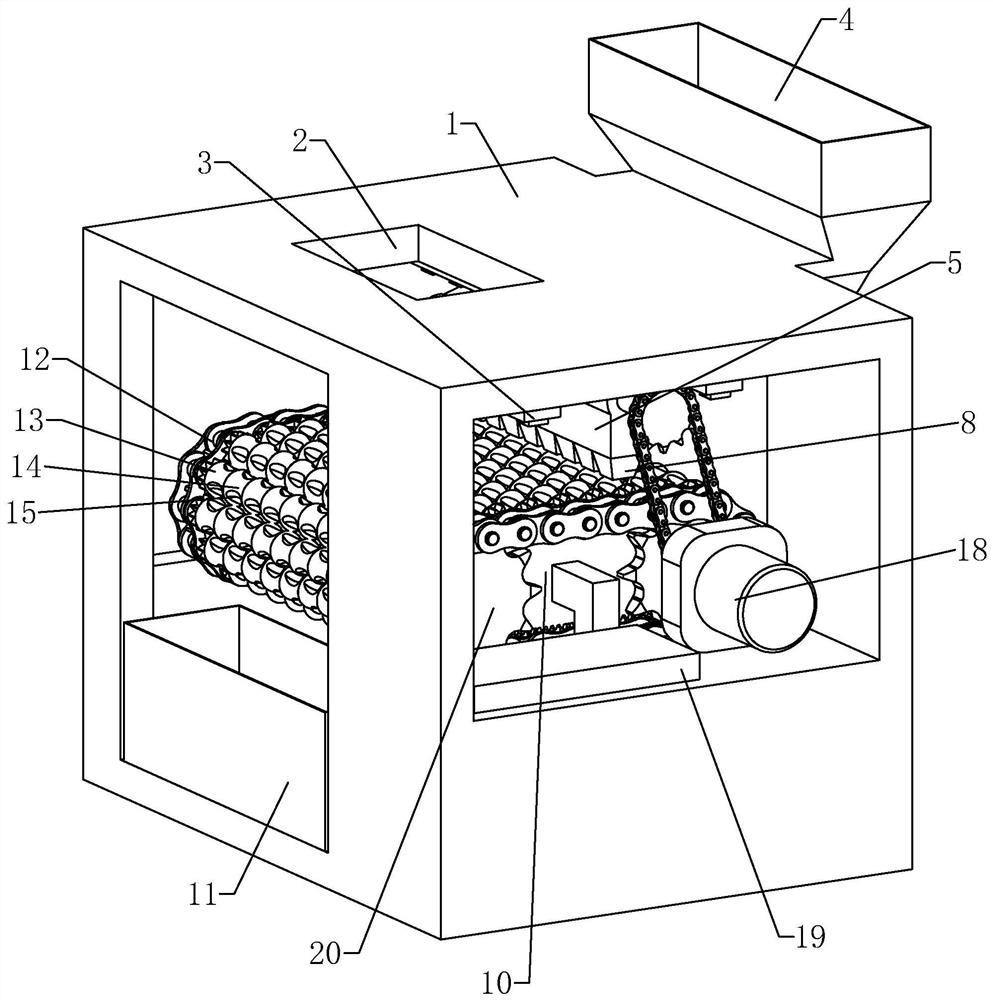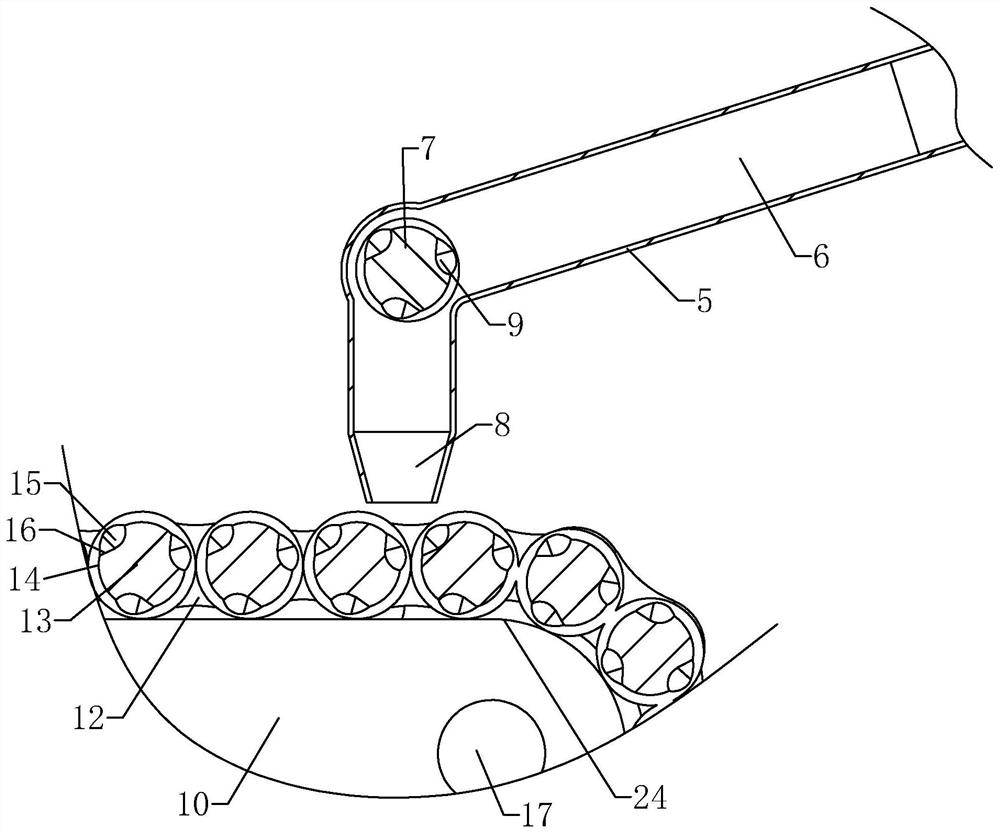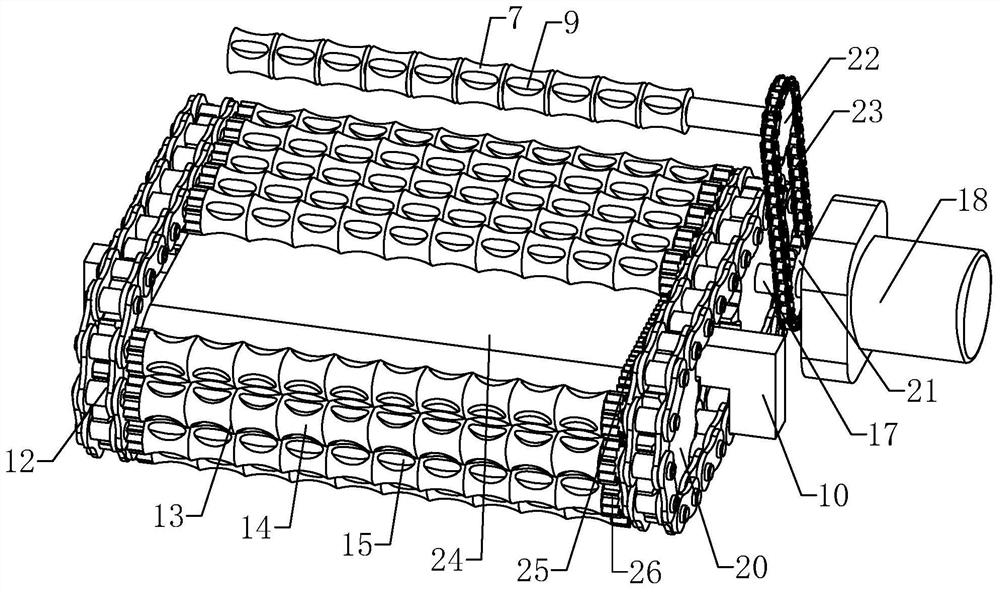Rice mildew nondestructive detection device
A non-destructive testing and rice technology, which is applied in the direction of measuring devices, testing plant materials, and material analysis through optical means, can solve the problems of rice stacking and blocking each other, large errors in test results, and inability to turn over, so as to ensure accuracy , Improve reliability, improve accuracy and detection efficiency
- Summary
- Abstract
- Description
- Claims
- Application Information
AI Technical Summary
Problems solved by technology
Method used
Image
Examples
Embodiment 1
[0041] See attached figure 1 , a non-destructive detection device for rice mildew, comprising a chassis 1, the chassis 1 can be a cuboid box structure, the top of the chassis 1 is provided with an image acquisition port 2, and the top side of the inner wall of the chassis 1 is fixedly provided with a light strip 3; It is equipped with an adding leveling mechanism and a turning mechanism; when in use, the rice is evenly dispersed by adding a leveling mechanism, and the turning mechanism performs the turning process of the rice; at the same time, the image acquisition device is used to take pictures at 2 image acquisition ports, thereby completing Non-destructive testing operation for rice mildew.
[0042] See attached figure 1 And attached figure 2 , adding a leveling mechanism, including a material filling bin 4 fixed on one side in the width direction of the cabinet 1, and a leveling slideway 5 is fixed on the lower part of the feeding bin 4 along the width direction of th...
Embodiment 2
[0053] See attached Figure 4 , a non-destructive detection device for rice mildew, its main structure is basically the same as that of Embodiment 1, and its distinguishing feature is that: an image collector 27 is fixedly arranged on the top of the cabinet 1 corresponding to the image collection port 2, and an image collector 27 is fixed on the top of the cabinet 1 and connected with the image collection port. The processor 28 electrically connected to the device 27, the processor 28 is electrically connected to the motor 18;
[0054] When the electronic nose sensor 29 detects that there is a mildew smell in the feeding bin 4, the signal is transmitted to the inside of the processor 28, and the processor 28 controls the image collector 27 to increase the shooting frequency, wherein the snapshot can be taken during the rotation of the rotating shaft 13, In this way, the batch of rice was photographed from multiple angles, which effectively improved the accuracy of the detectio...
Embodiment 3
[0057] See attached Figure 5 And attached Image 6 , a non-destructive detection device for rice mildew, its main structure is basically the same as that of Embodiment 2, and its distinguishing feature is that: a hose 30 is connected to the outside of the feeding bin 4, and a collection tube is fixed at the end of the hose 30 away from the feeding bin 4 31. The end of the collection tube 31 away from the hose 30 is provided with a closing mechanism.
[0058] The closing mechanism includes a support rod 32 fixedly arranged at the end of the collection tube 31, and the side of the support rod 32 positioned at the inside of the collection tube 31 is provided with a multi-layer rotating plate 33 for rotation, and the middle part of the rotating plate 33 is rotationally connected with the middle part of the support rod 32, and A stop cloth 34 is fixedly connected between the multi-layer rotating plate 33 and the support rod 32, and the end of the collection pipe 31 close to the h...
PUM
 Login to View More
Login to View More Abstract
Description
Claims
Application Information
 Login to View More
Login to View More - R&D
- Intellectual Property
- Life Sciences
- Materials
- Tech Scout
- Unparalleled Data Quality
- Higher Quality Content
- 60% Fewer Hallucinations
Browse by: Latest US Patents, China's latest patents, Technical Efficacy Thesaurus, Application Domain, Technology Topic, Popular Technical Reports.
© 2025 PatSnap. All rights reserved.Legal|Privacy policy|Modern Slavery Act Transparency Statement|Sitemap|About US| Contact US: help@patsnap.com



